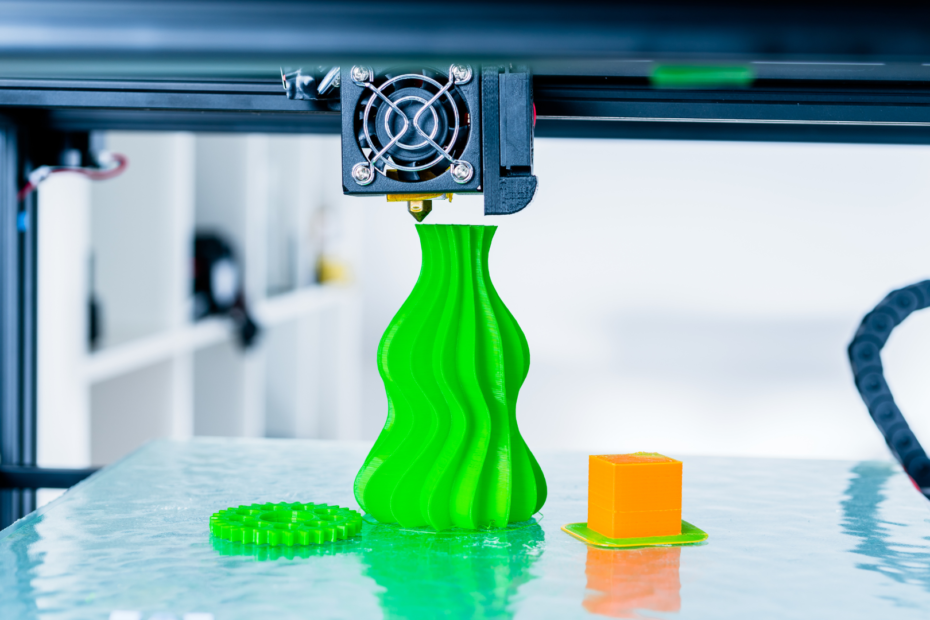Are you curious about 3D printing but have no idea where to start? Look no further! In this comprehensive guide, we’ll take a deep dive into the world of 3D printing and explore how it works. From the basics of 3D modeling to the different types of printers available, we’ve got you covered. Whether you’re an entrepreneur looking to explore new possibilities or just a curious hobbyist, get ready to learn everything you need to know about 3D printing.
What is 3D Printing?
Three-dimensional printing is a process of making a three-dimensional object from a digital file. It is also known as additive manufacturing and rapid prototyping. 3D printing is done using an additive process, the successive layers of material are placed in various shapes.
3D printing has been around for more than three decades, but it was only recently that the technology became widely available to consumers and businesses. Thanks to the maker movement and platforms like Shapeways and Thingiverse, 3D printing is now within reach of anyone with access to a computer and an Internet connection.
3D printing can be used to create just about anything, from simple objects like keychains to complex items like prosthetic limbs. In recent years, 3D printing has been used to create everything from houses to cars. The possibilities are virtually limitless.
If you’re new to 3D printing, this guide will give you a comprehensive overview of how it works, what you need to get started, and where you can find more information.
How Does 3D Printing Work?
Three-dimensional printing technology has been around for several decades, but it has only recently become more widely available and affordable for consumers. 3D printers work by building up layers of material to create a three-dimensional object.
There are a few different technologies that can be used for 3D printing, but the most common is called fused deposition modeling (FDM). Those FDM printers heat a filament of thermoplastic material and extrude it through a nozzle to build up layers of the desired object.
Other 3D printing technologies include stereolithography (SLA), selective laser sintering (SLS), and direct metal laser sintering (DMLS). These technologies use different methods to build up layers of material, but the end result is the same: a three-dimensional object that can be used for a variety of applications.
Where is 3D Printing Used?
3D printing technology has been used in a variety of industries to create prototypes and end-use products. In the medical field, these 3D printers are utilized for creating prosthetic limbs and implants. In the car or automotive industry, such printers are used to create car parts and prototypes. In the aerospace industry, 3D printers are used to create engine parts and other aircraft components.
3D printing is also used to create consumer products such as toys, jewelry, and everyday household items. In the food industry, 3D printers are used to create custom-designed chocolates and confections. Additionally, 3D printers can be used in education and research to create models of complex objects and structures for study.
What Materials Can Be Used in 3D Printing?
3D printing can be performed using a variety of materials, including metals, plastics, and ceramics. Each type of material has its own unique set of properties that make it well-suited for certain applications.
- Metals: Metals such as aluminum, stainless steel, and titanium are commonly used in 3D printing. These materials are strong and durable, making them ideal for creating parts that will be subject to high loads or stress. Metals can also be polished to a high shine, making them ideal for creating aesthetically pleasing products.
- Plastics: Plastics are the most common type of material used in 3D printing. They are relatively inexpensive and easy to work with, making them ideal for prototyping and small-scale production runs. Plastics can be printed using a variety of techniques, including fused deposition modeling (FDM) and stereolithography (SLA).
- Ceramics: Ceramics are another type of material that can be used in 3D printing. They offer high strength and resistance to heat and wear, making them ideal for applications where these properties are required. Ceramics can be difficult to work with, however, so they are typically only used in specialist applications.
Take Advantage of 3D Printing and Be Impressed
3D printing is an incredible technology that has the potential to revolutionize many industries. It can be a complex process to understand, but with our comprehensive guide above, we hope we have provided you with enough information and tips so that you can get started on your own 3D printing journey. So why not try it out for yourself and see what amazing creations you can make?
